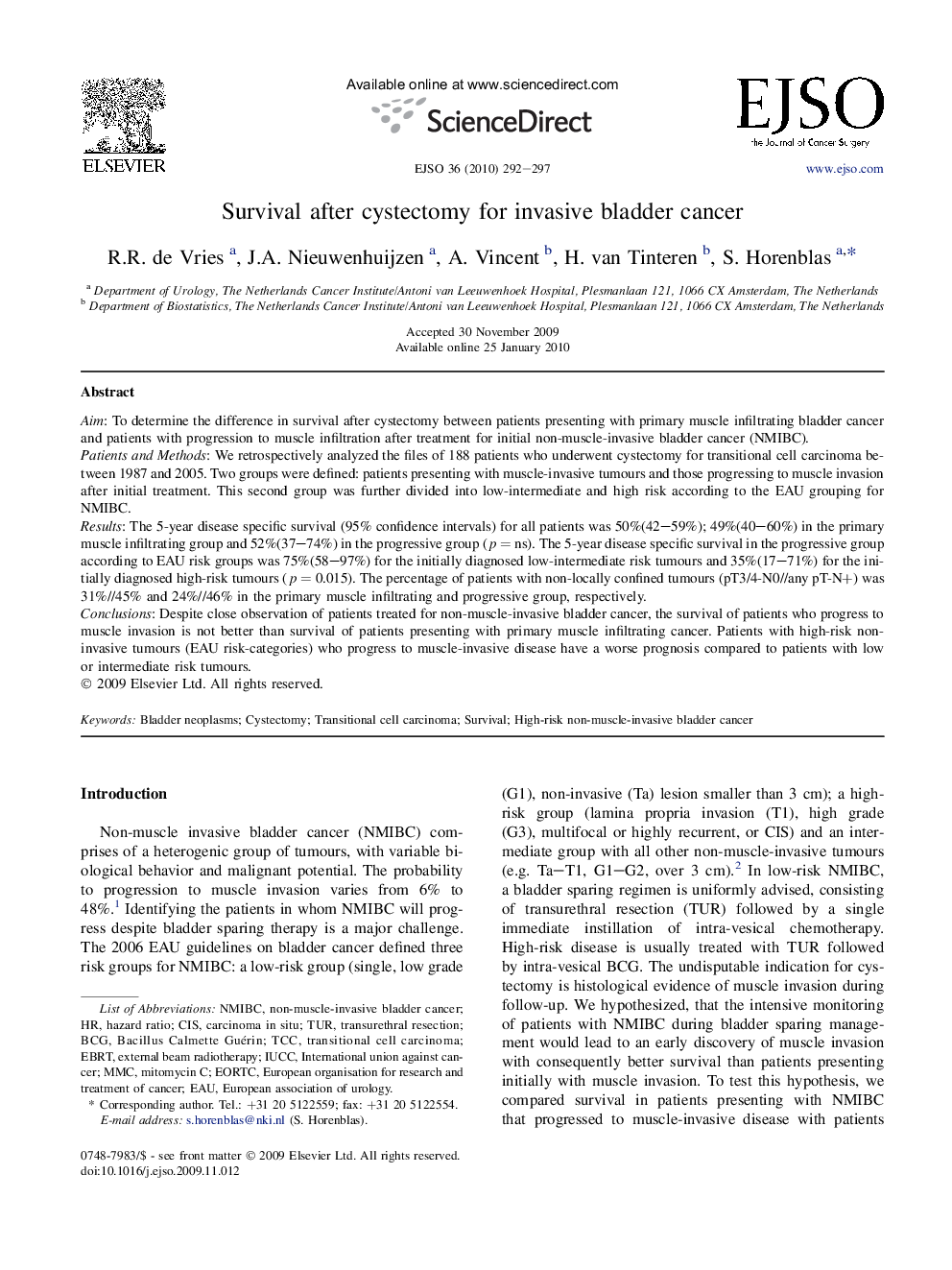| Article ID | Journal | Published Year | Pages | File Type |
|---|---|---|---|---|
| 3986541 | European Journal of Surgical Oncology (EJSO) | 2010 | 6 Pages |
AimTo determine the difference in survival after cystectomy between patients presenting with primary muscle infiltrating bladder cancer and patients with progression to muscle infiltration after treatment for initial non-muscle-invasive bladder cancer (NMIBC).Patients and MethodsWe retrospectively analyzed the files of 188 patients who underwent cystectomy for transitional cell carcinoma between 1987 and 2005. Two groups were defined: patients presenting with muscle-invasive tumours and those progressing to muscle invasion after initial treatment. This second group was further divided into low-intermediate and high risk according to the EAU grouping for NMIBC.ResultsThe 5-year disease specific survival (95% confidence intervals) for all patients was 50%(42–59%); 49%(40–60%) in the primary muscle infiltrating group and 52%(37–74%) in the progressive group (p = ns). The 5-year disease specific survival in the progressive group according to EAU risk groups was 75%(58–97%) for the initially diagnosed low-intermediate risk tumours and 35%(17–71%) for the initially diagnosed high-risk tumours (p = 0.015). The percentage of patients with non-locally confined tumours (pT3/4-N0//any pT-N+) was 31%//45% and 24%//46% in the primary muscle infiltrating and progressive group, respectively.ConclusionsDespite close observation of patients treated for non-muscle-invasive bladder cancer, the survival of patients who progress to muscle invasion is not better than survival of patients presenting with primary muscle infiltrating cancer. Patients with high-risk non-invasive tumours (EAU risk-categories) who progress to muscle-invasive disease have a worse prognosis compared to patients with low or intermediate risk tumours.
